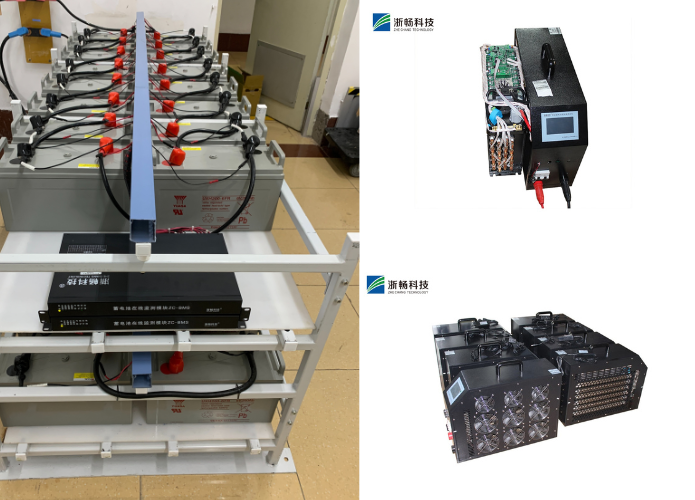The Ultimate Guide to Battery Checkers: Choosing the Right Tool for Your Needs
Maintaining your vehicle’s battery health is crucial for ensuring its reliability and performance. An auto battery checker is an essential tool that helps you monitor the condition of your battery, prevent unexpected failures, and extend its lifespan. In this comprehensive guide, we will explore the different types of battery checkers available—focusing on auto battery checkers, digital battery checkers, and smart battery checkers. We will also discuss how to choose the right tool for your needs, their benefits, and tips for using them effectively.
Understanding Auto Batteries
What Is an Auto Battery?
Before delving into battery checkers, it's important to understand the components and functions of automotive batteries. Most vehicles are equipped with lead-acid batteries, which are designed to provide a quick burst of energy to start the engine and power electrical systems when the engine is off. These batteries consist of multiple cells filled with an electrolyte solution that facilitates chemical reactions to generate electricity.
Battery Components
1.Cells: A typical lead-acid battery consists of six cells, each producing about 2 volts, for a total of 12 volts.
2.Electrolyte: The electrolyte is a mixture of sulfuric acid and water, which allows for chemical reactions that produce electrical energy.
3.Plates: Each cell contains positive and negative plates made of lead and lead dioxide. The interaction between these plates and the electrolyte produces electrical energy.
4.Separator: This is a porous material that prevents the positive and negative plates from touching while allowing ions to pass through.
How Batteries Work
When you turn the key in your ignition, the battery sends an electrical charge to the starter motor, allowing it to crank the engine. The battery also powers electrical systems like lights, radio, and air conditioning when the engine is off. Over time, the battery can degrade due to factors such as temperature, usage patterns, and improper maintenance. Regularly checking the battery's condition is vital to avoid unexpected breakdowns.
The Importance of an Auto Battery Checker
An auto battery checker is a device designed to evaluate the health and charge level of your vehicle’s battery. It can provide crucial insights into whether your battery is functioning optimally or if it needs replacement. Here are some reasons why investing in a quality auto battery checker is beneficial:
Prevention of Unexpected Failures
By regularly checking your battery’s health, you can identify issues before they lead to failure. A weak or failing battery can leave you stranded, especially in adverse weather conditions. Regular checks can alert you to declining battery health, allowing for timely interventions.
- Cost Savings
Early detection of battery problems can save you money on roadside assistance and prevent costly repairs. Replacing a battery is often less expensive than dealing with the consequences of a battery failure, such as a dead battery while on the road or needing a tow.
- Extended Battery Life
Regular monitoring helps maintain optimal battery performance, extending its lifespan. By understanding the state of your battery, you can take preventative measures to avoid deep discharges and overcharging, both of which can reduce battery life significantly.

Types of Auto Battery Checkers
There are several types of battery checkers available on the market, each with its own features and benefits. Here, we will focus on three main categories: traditional auto battery checkers, digital battery checkers, and smart battery checkers.
1. Traditional Auto Battery Checkers
Traditional auto battery checkers, often referred to as hydrometers or analog testers, are simple devices that measure the specific gravity of the electrolyte in lead-acid batteries. They consist of a bulb and a float, allowing users to check the battery’s state of charge. While effective, they require manual interpretation and may not provide as much detailed information as modern alternatives.
How Traditional Checkers Work
To use a traditional battery checker, you draw a sample of the battery’s electrolyte into the hydrometer. The specific gravity of the electrolyte indicates the state of charge: higher specific gravity means a fully charged battery, while lower readings suggest depletion.
- Advantages:
Cost-effective: Traditional checkers are generally less expensive than digital or smart versions.
Simple to use: The straightforward design allows for easy operation.
No need for batteries or power sources: These devices operate mechanically without needing external power.
- Disadvantages:
Limited to lead-acid batteries: Traditional checkers may not work with other battery types, such as AGM or gel batteries.
Requires manual reading and interpretation: Users must understand how to interpret specific gravity readings accurately.
2. Digital Battery Checkers
Digital battery checkers are more advanced than their analog counterparts. They offer digital displays that provide precise readings of voltage, state of charge, and sometimes even internal resistance. These tools often come with additional features, such as automatic shut-off and multiple testing modes.
Features of Digital Checkers
Digital battery checkers often provide more comprehensive data than traditional models. They can show voltage levels, state of charge percentages, and even alerts for potential issues. Some models can perform load tests, providing a more thorough evaluation of battery health.
- Advantages:
Easy-to-read digital displays: Clear readings reduce the chances of user error.
More accurate measurements: Digital devices typically offer greater precision than analog models.
Suitable for various battery types: Many digital checkers can handle different battery chemistries, including AGM and gel batteries.
- Disadvantages:
May be more expensive than traditional checkers: The advanced features often come at a higher price point.
Requires batteries or charging: Digital checkers need power to operate, which may require regular charging or battery replacement.
3. Smart Battery Checkers
Smart battery checkers take battery diagnostics to the next level by incorporating technology such as Bluetooth connectivity and smartphone integration. These devices can provide detailed analysis and reports on battery health, performance history, and even predictive analytics about when you might need a replacement.
The Benefits of Smart Technology
Smart battery checkers connect to mobile apps, providing real-time data about your battery’s performance. Some models can even alert you to changes in battery health, allowing you to take proactive measures before failure occurs.
- Advantages:
Comprehensive data analysis and reporting: Smart checkers often provide more detailed insights than traditional and digital models.
User-friendly apps for smartphones: Many smart checkers come with intuitive apps that make it easy to track battery health over time.
Real-time monitoring and alerts: Users receive notifications about battery status changes, enabling proactive maintenance.
- Disadvantages:
Higher price point: The advanced technology involved in smart checkers typically means they cost more.
May require a learning curve: Understanding all features and functionalities may take some time for new users.
Key Features to Look For
When choosing an auto battery checker, consider the following features to ensure you select the right tool for your needs:
1. Compatibility
Ensure that the battery checker you choose is compatible with the type of batteries you intend to test. While most checkers can handle lead-acid batteries, digital and smart battery checkers may also work with AGM and gel batteries. Check the specifications before purchasing to avoid compatibility issues.
2. Measurement Accuracy
Look for devices that provide accurate and reliable measurements. Digital battery checkers typically offer better precision than analog models, while smart battery checkers often provide the most comprehensive insights. Read reviews and product specifications to gauge the accuracy of potential purchases.
3. Ease of Use
Choose a battery checker that is user-friendly, with clear instructions and easy-to-read displays. Digital and smart battery checkers often have intuitive interfaces that make them easy to operate. If possible, test the device before purchasing to ensure it feels comfortable and straightforward to use.
4. Additional Features
Consider any additional features that may be beneficial for your needs. Some battery checkers come with built-in printers, data logging capabilities, or the ability to perform load tests. Smart battery checkers may provide alerts and notifications through mobile apps. Identify which features are essential for your specific use case.
5. Portability
If you plan to use the checker at multiple locations or on different vehicles, a compact and lightweight model is ideal. Many digital and smart battery checkers are designed for portability, making them easy to carry and store.

How to Use an Auto Battery Checker
Using an auto battery checker is relatively straightforward, but it’s essential to follow the manufacturer’s instructions for accurate results. Here’s a general guide on how to use both digital and smart battery checkers:
Step 1: Prepare the Vehicle
1.Turn Off the Engine: Ensure the vehicle is turned off to avoid any electrical interference. This step is critical for obtaining accurate readings.
2.Access the Battery: Locate the battery and, if necessary, clean any corrosion from the terminals. If you notice corrosion (a white, powdery substance), it’s a good idea to clean it off before proceeding with the test.
Step 2: Connect the Checker
1.For Digital Checkers:
Connect the positive lead (red) to the positive terminal and the negative lead (black) to the negative terminal. Ensure the connections are secure to avoid faulty readings.
Turn on the device and follow the prompts on the display. Some models may require you to select the type of battery being tested.
2.For Smart Checkers:
Connect the checker as you would with a digital model, ensuring solid connections.
Open the companion app on your smartphone to connect via Bluetooth, if applicable. Follow the app instructions for setup and monitoring.
Step 3: Interpret the Results
After a few seconds, the checker will display the battery's voltage, state of charge, and, if applicable, additional metrics such as internal resistance. Compare the results to the manufacturer’s specifications to assess battery health. For example, a fully charged battery should typically read around 12.6 to 12.8 volts when the engine is off.
Step 4: Follow Up
If the battery checker indicates that your battery is weak or failing, consider recharging or replacing it. Regular monitoring can help prevent issues in the future. If you're unsure about the results, consult a professional mechanic for further testing or battery evaluation.
Maintenance Tips for Your Battery
In addition to using an auto battery checker, following these maintenance tips can help prolong the life of your vehicle’s battery:
1. Regular Inspections
Check your battery's condition every few months, especially before long trips or during extreme weather conditions. High temperatures can accelerate battery degradation, while cold weather can make a weak battery fail unexpectedly.
2. Keep Terminals Clean
Ensure the battery terminals are free from corrosion. Clean them periodically with a mixture of baking soda and water. Use a wire brush to scrub away any buildup, but be cautious not to damage the terminals.
3. Avoid Short Trips
Frequent short trips can prevent the battery from fully charging. If possible, combine errands or take longer drives occasionally. This practice helps ensure the battery maintains a full charge, reducing wear over time.
4. Limit Electronics Usage
Avoid using electrical accessories when the engine is off to prevent draining the battery. If you must use electronic devices while the engine is off, consider using a portable power source instead.
5. Store Properly
If you need to store your vehicle for an extended period, consider disconnecting the battery or using a battery maintainer. A maintainer can keep the battery charged without overcharging, preserving its health.
Conclusion
An auto battery checker is an invaluable tool for any vehicle owner looking to maintain optimal battery health and prevent unexpected failures. By understanding the different types of battery checkers available—traditional, digital, and smart—you can choose the right tool for your needs. Regularly monitoring your battery’s condition not only saves you money but also ensures your vehicle remains reliable and ready to go when you need it most.
Investing in a quality auto battery checker is a step towards proactive vehicle maintenance. Whether you opt for a simple digital battery checker or a sophisticated smart battery checker, you’ll gain peace of mind knowing you can keep your battery in top shape. Remember to follow maintenance best practices and keep an eye on your battery’s performance for a smooth and reliable driving experience.
By taking these steps and using the right tools, you can ensure that your vehicle's battery remains in optimal condition, preventing potential issues and enhancing your overall driving experience.
Popular Battery Tester
Popular Battery Tester
Latest News
Latest News


Get Price of Battery Tester
Get Price of Battery Tester
Address:
Floor 3, Building 1, No.1418-60, Moganshan road, Hangzhou city, Zhejiang Province, China.310015

















































